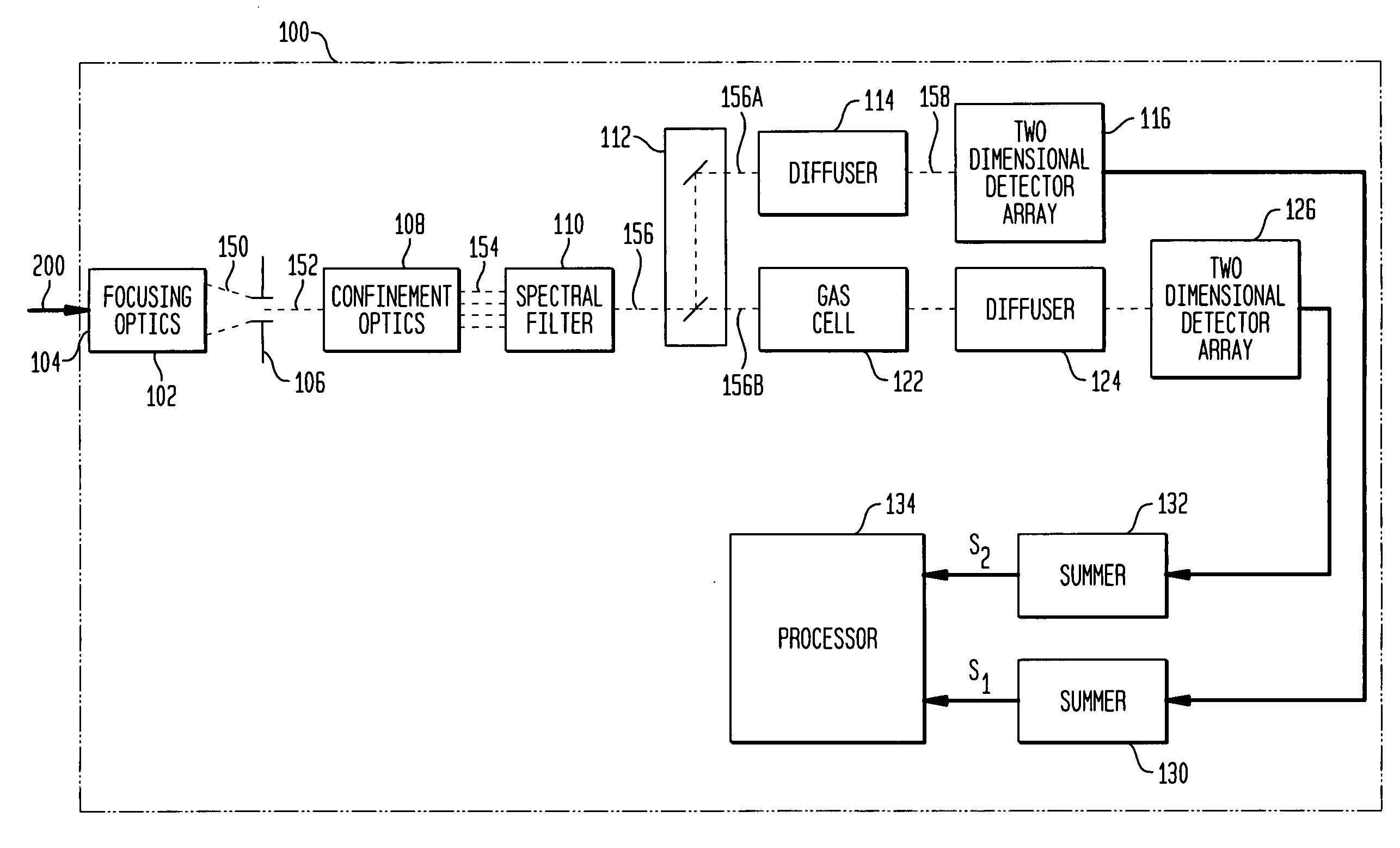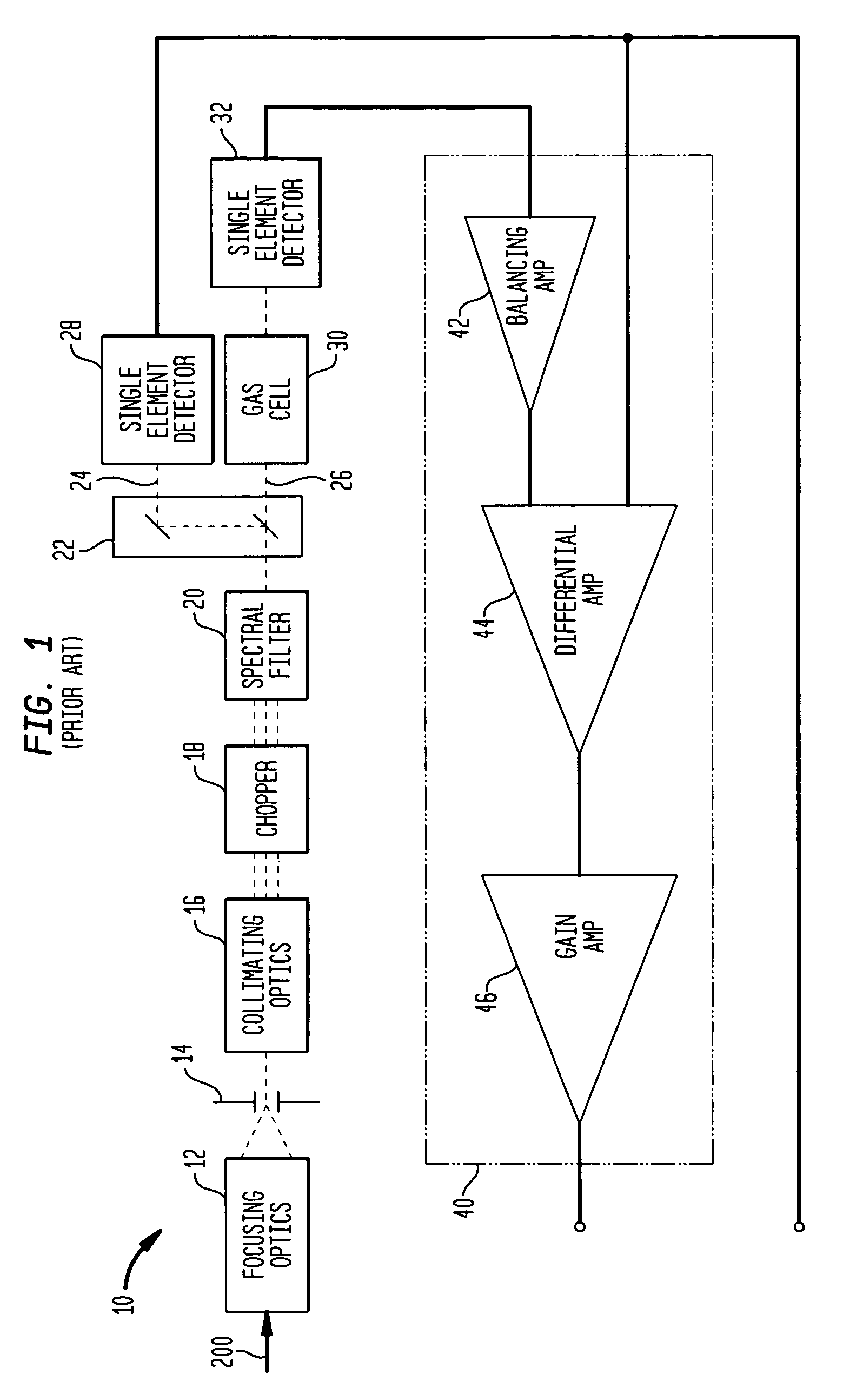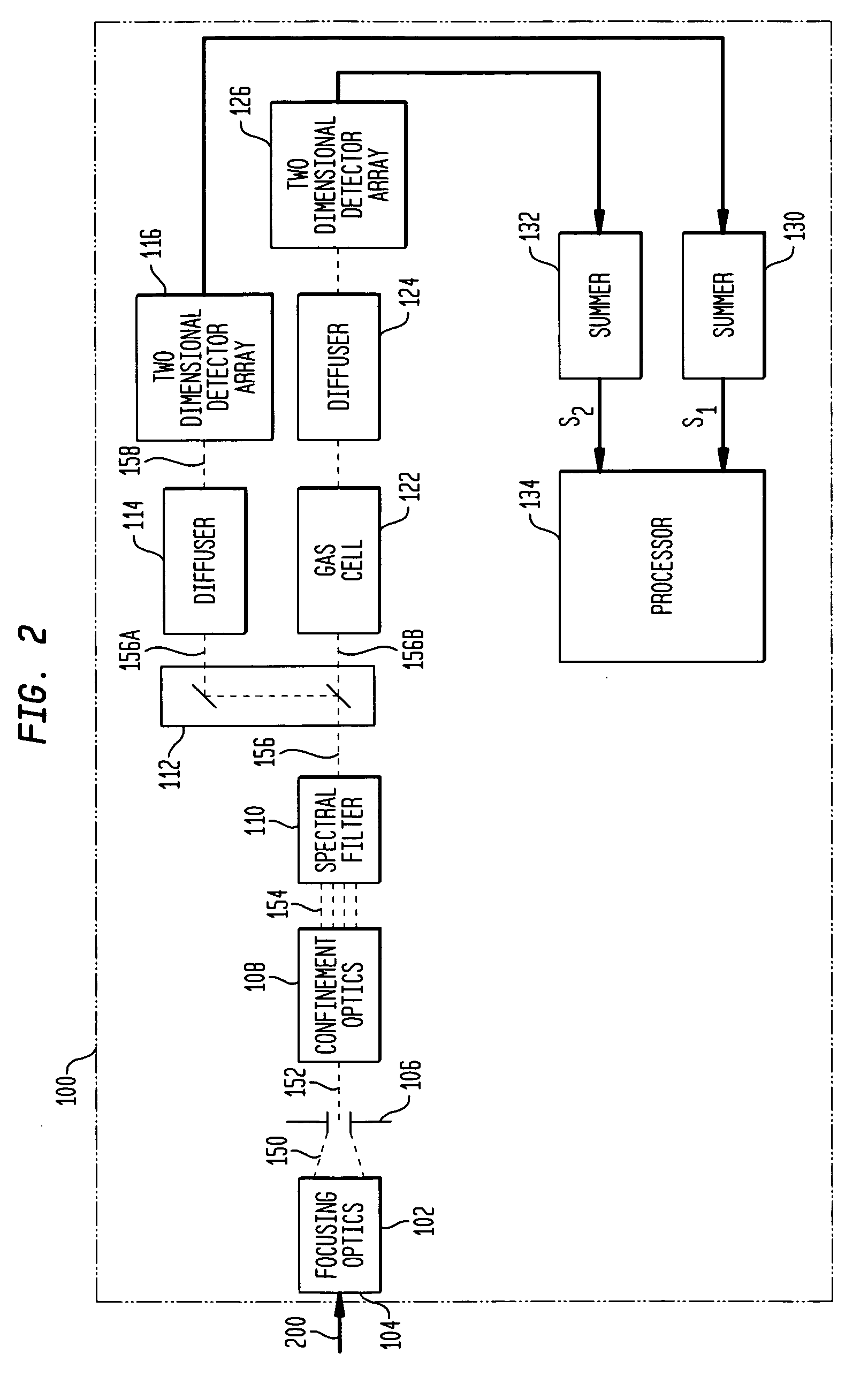Internally-calibrated, two-detector gas filter correlation radiometry (GFCR) system
a gas filter and correlation radiometry technology, applied in the field of two-detector gas filter correlation radiometry, can solve the problems of loss of signal integration time, difficult model of signals, severe corruption of difference measurement, etc., and achieve the effect of accurate calibration and easy calibration
- Summary
- Abstract
- Description
- Claims
- Application Information
AI Technical Summary
Benefits of technology
Problems solved by technology
Method used
Image
Examples
Embodiment Construction
[0031]The present invention is a gas filter correlation radiometry (GFCR) system utilizing a two-detector methodology to simultaneously provide light-absorbing and non-light absorbing measurements without requiring any back-end electronics to balance the system. The system structure also provides for novel approaches to on-board balance calibration and data analysis calibration.
[0032]Referring again to the drawings and more particularly to FIG. 2, a GFCR system in accordance with an embodiment of the present invention is shown and is contained within the dashed-line box referenced by numeral 100. In GFCR system 100, optical signal transmission between elements thereof is indicated by dashed-lines and electrical signal transmission between elements thereof is indicated by solid lines that terminate in an arrowhead.
[0033]GFCR system 100 provides a measurement of a gas of interest or “target gas” by processing an external scene light 200 that defines a scene being imaged some distance ...
PUM
| Property | Measurement | Unit |
|---|---|---|
| optical remote sensing | aaaaa | aaaaa |
| spectral wavelengths | aaaaa | aaaaa |
| pressure | aaaaa | aaaaa |
Abstract
Description
Claims
Application Information
 Login to View More
Login to View More - R&D
- Intellectual Property
- Life Sciences
- Materials
- Tech Scout
- Unparalleled Data Quality
- Higher Quality Content
- 60% Fewer Hallucinations
Browse by: Latest US Patents, China's latest patents, Technical Efficacy Thesaurus, Application Domain, Technology Topic, Popular Technical Reports.
© 2025 PatSnap. All rights reserved.Legal|Privacy policy|Modern Slavery Act Transparency Statement|Sitemap|About US| Contact US: help@patsnap.com



